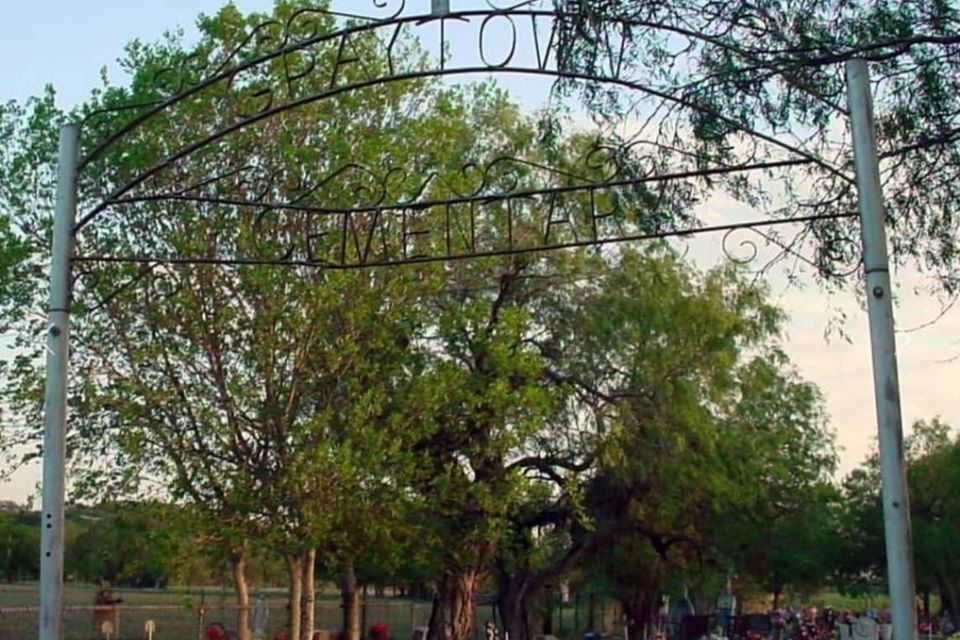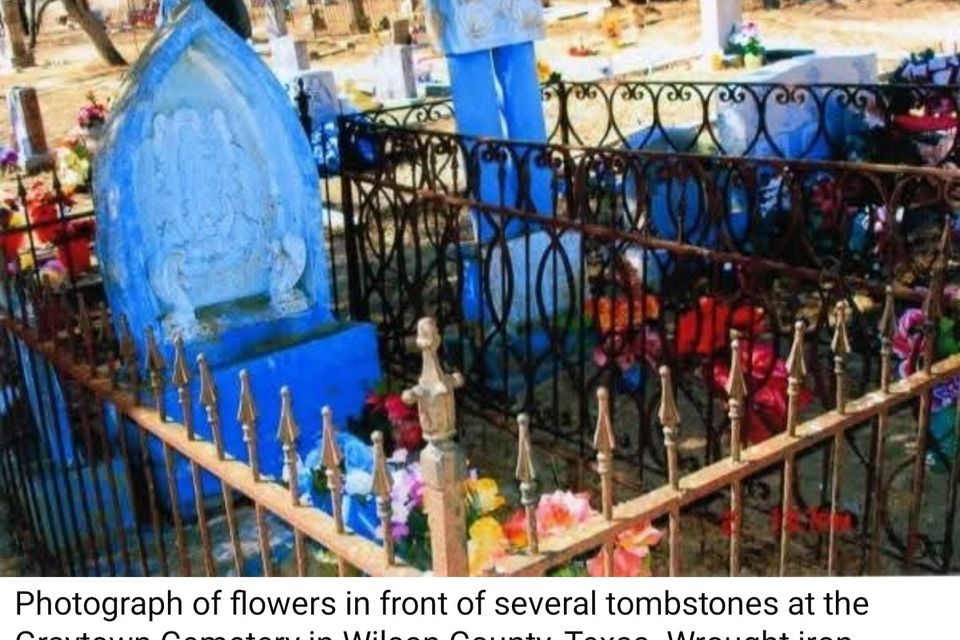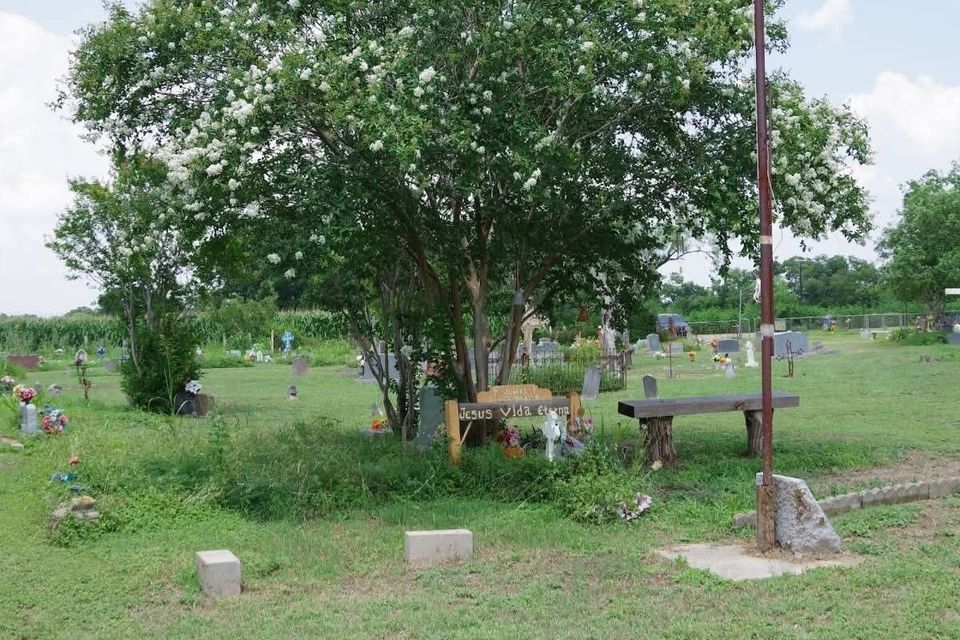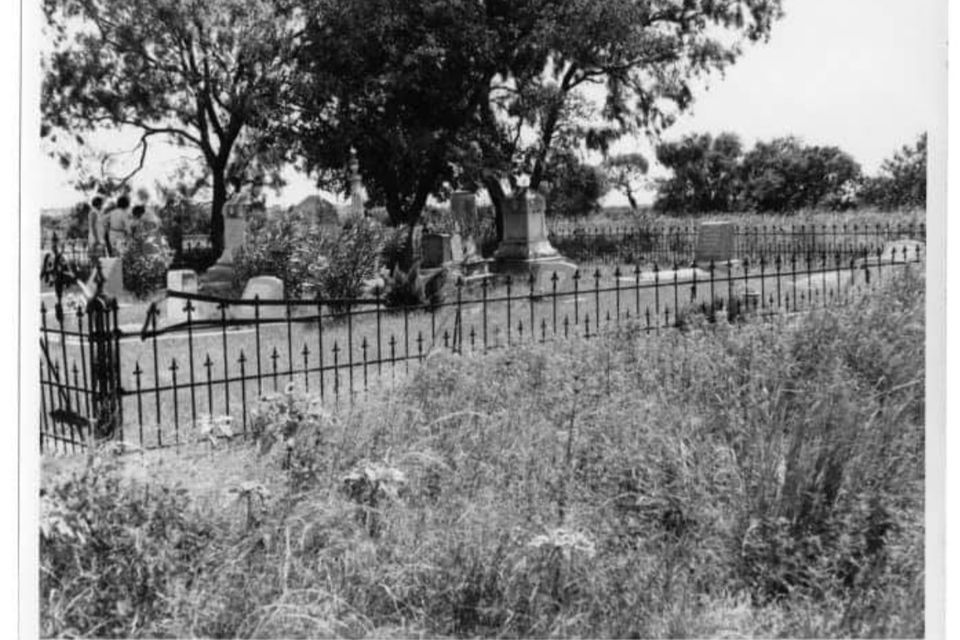[These remarks were compiled from several handwritten letters dated in the years of 1967-1971. They were written by J. G. Seguin, a great-great grandson of Mairano Seguin. ]
This land grant was more or less six miles long and three or four miles wide and three or four miles wide. Its northeastern border was bounded by the San Antonio River. Its southeastern corner was the site of a river crossing and the location of the Graytown Community. The southern border was in Wilson County passing north of Fairview to within three miles of the Atascosa county line and then turned northwest
into Bexar County. The northwestern corner is in Bexar County and top boundary of the grant returned to the San Antonio River.
Mariano Seguin was a cousin to Erasmo Seguin who owned a ranch north of Floresville which was a part of the original Simon and Juan de Arocha grant. Erasmo and his son
Juan were very much involved in the Texas Revolution for independence. The Graytown site was named after James Gray who had married the stepdaughter of Mariano Seguin.
She had inherited this property and she and her husband developed this acreage into one of the earliest communities in Wilson County.
Antonio C. Seguin was the son of Mariano Seguin and inherited the major portion of the Seguin survey. J. G. Seguin, the author of the letters used to develop this article, was the
last Seguin to own a portion of the original survey. His property was at the southern end of the grant about 16 miles from Graytown.
In 1850 or earlier, Antonio C. Seguin built a house on this ranch. The house at the ranch's headquarters was still being occupied in 1967. It was located about one half mile north off South Flores Road near Graytown, Texas and close to the San Antonio River. It was across the road from the Rafel Flores house. At this time Gaspar and Reynaldo Flores and their sisters were living in this house. These persons were grandchildren of Antonio Seguin. The Flores Family had built this home on some 70 to 80 acres which belonged to their Aunt Trinidad, a daughter of Antonio Seguin.The Seguin Ranch was named El Rancho Viego (the old ranch). The ranch headquarters included a mill, a general store and many smaller homes for the workers. Antonio C. Seguin, Sr. also had a cotton gin. He was a farmer, rancher and storekeeper. On the ranch he raised a large number of horses in addition to great herds of longhorn cattle. At that time the ranch was all open range with no fences to restrain the movement of the horses and cattle. This livestock would stray off the ranch and even move into adjacent counties, even as far as Pleasanton in Atascosa County. It sometimes took as many as three days to gather and return this livestock back to the ranch. On one occasion as the vaqueros were looking for a place to spend the night after riding all day looking for horses. They located a small house where an older gentleman was living by himself. The old man gave them permission to sleep outside the house and even treated them to some coffee. However, that night while the cowboys were asleep, the old man stole the sugar which they carried in their saddlebags.
Antonio Seguin dug many earth tanks and ponds on the ranch to provide water for the horses and cattle. These earthen impoundments were created by using teams of mules
and scrapers. Some of these ponds still exist and are still serving their original purpose.
At the south end of the Mariano Seguin survey there is a larger pond also called a lake. This lake was called by old timers and Spaniards Laguna Seca or Dry Lake. Generally the lake will always have at least some water in it. It takes about five inches of rain to fill the lake when it is almost empty. The lake will provide water for livestock for four to six months if there is no additional rain.
Later on in time it was decided that the lake should be called Seguin Lake since it had been owned by the Seguins for a period of over two hundred years. Some of the Seguin
heirs think the vicinity around the lake should be called the Seguin Lake Community as the old timers used to call the neighborhood in this area Laguna Seca Community.
Through time the Mariano Seguin survey has been divided into many tracts and sold to people not kin to the Seguins. The heirs divided this land from generation to generation and the new heirs started selling their share to unrelated individuals.
Following is a listing of some of the new owners not related to the Seguin family:
Walter Freeman of San Antonio – 900 acres
Red Berry - 610 acres
Esperanza Ranch - 800 acres
Rafel Flores of Graytown - 150 acres
Dr. Candelario Saenz - 300 acres
Andres Garza - 92 acres
Willie Robles of San Antonio - 31 acres
Mr. Kintarina of the Hill Top Vicinity - 164 acres
Leo Jasik and Stanley also own land out of the Seguin survey.
Plus, there are many other names who J. G. Seguin doesn't know.
Seguin heirs till owning land out of the Seguin survey in the 1968-1971 period:
Eugene Seguin - 210 acres
Ernestina Seguin - 210 acres
J. G. Seguin - 88 acres
Gaspar and Reynaldo Flores and their sisters - 70 to 80 acres
The site of the Graytown Cemetery was donated to the Catholic Church by Antonio C. Seguin.
***********************
COURTESY / Compiled by Gene Maeckel from the files of the Wilson County Historical Society Archives, P.O. Box 190,













